
This mushroom cannot be overlooked. It is huge and so colored that its hat contrasts with the place where it grows. It's an arboreal mushroom, and I noticed it close to the ground because it was growing on a fallen trunk. Dryad's Saddle mushroom is one of the largest fungi (in my country it is the largest arboreal mushroom).
Tego grzyba nie da się przeoczyć. Jest ogromny i tak ubarwiony, że jego kapelusz kontrastuje z miejscem, w którym rośnie. To grzyb nadrzewny, a ja zauważyłam go blisko ziemi, bo rósł na powalonym pniu. Żagwiak łuskowaty zaliczany jest do jednych z największych grzybów (w Polsce to największy nadrzewny grzyb).
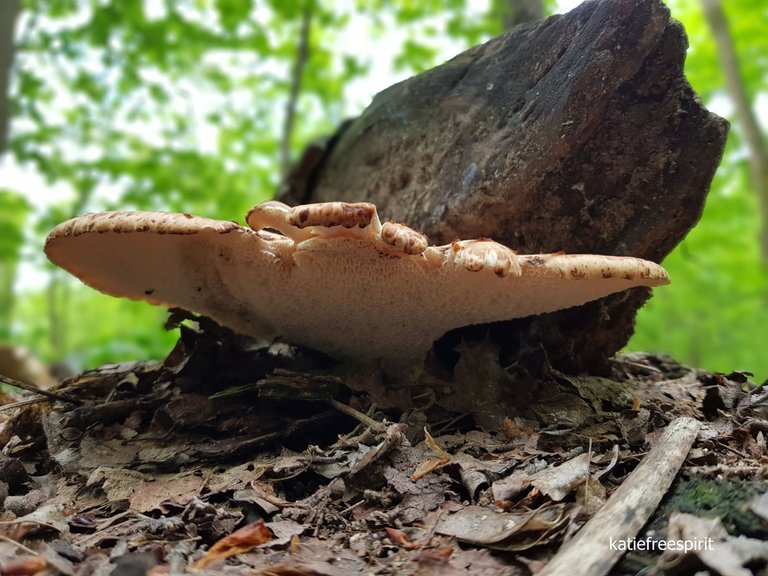
In the photo above, this mushroom reminds me a bit of a sea animal, especially a manta ;) But at the bottom, you can see its characteristic scales.
Na zdjęciu powyżej ten grzyb przypomina mi trochę jakieś morskie zwierzę, przede wszystkim mantę ;) Za to na dole możecie zobaczyć jego charakterystyczne łuski. Stąd jego drugi człon nazwy - łuskowaty.
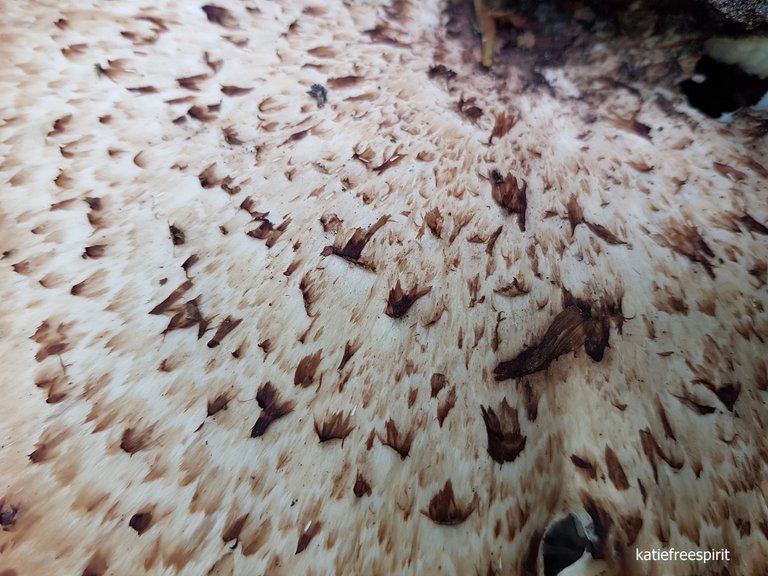
While walking in the forest, I saw two such mushrooms in the forest. One grew on the trunk, and the other was lying on the ground, it was lifted from the ground. I wonder if it was done by a human or an animal. This mushroom is edible. If a man left it, it was unnecessary, because he could make a mushroom soup out of it. In Romania and Ukraine, these mushrooms are fried with onions.
Podczas spaceru po lesie zobaczyłam w lesie dwa takie grzyby. Jeden rósł na pniu, a drugi leżał na ziemi, był wyjęty z podłoża. Ciekawe, czy zrobił to człowiek, czy zwierzę. Ten grzyb jest jadalny. Jeśli zostawił go jakiś człowiek to niepotrzebnie, bo mógł zrobić z niego np. zupę grzybową. W Rumunii i na Ukrainie je się żagwiaki łuskowane podsmażone z cebulką.
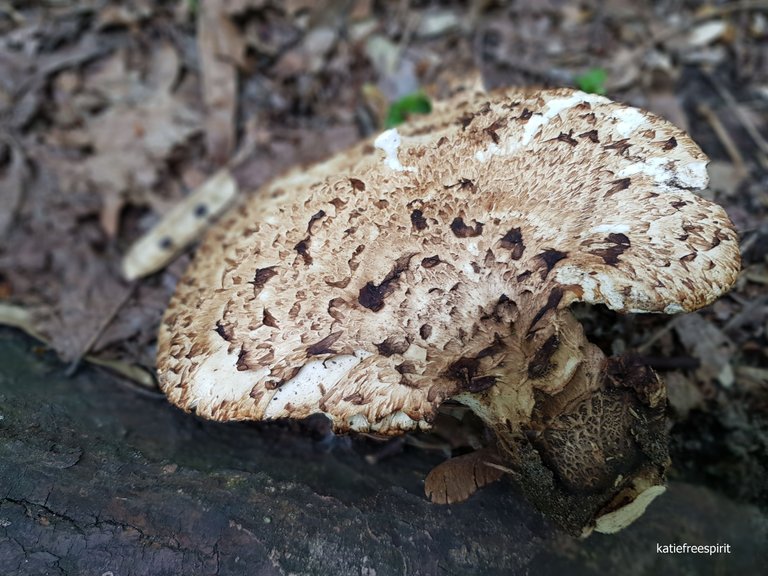
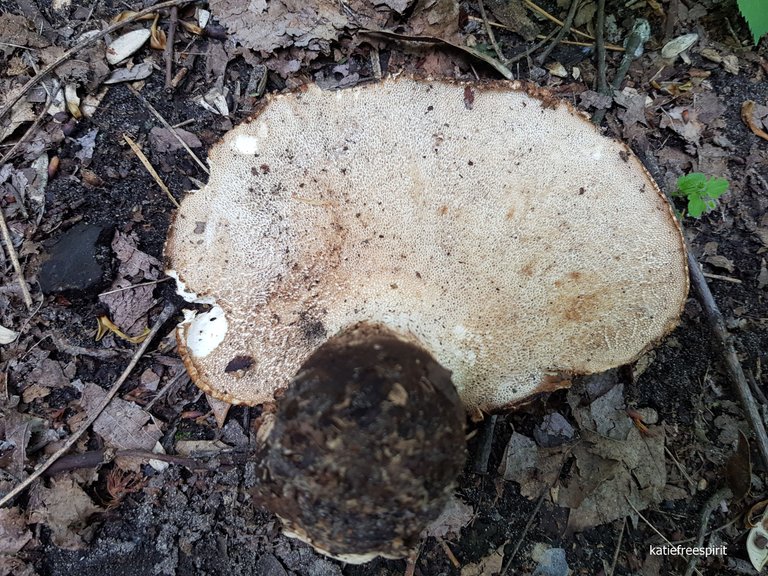
This fungus is found in forests, parks, gardens, bushes, and along roads. It grows on living and dying trunks of deciduous trees, rarely on conifers. It occurs on trees almost all year round, young fruiting bodies appear in March and develop until the first frost, and overripe fruiting bodies sometimes stay on trunks even until February. It is a parasite of living trees. It most often grows on beech, maple and ash trees.
Source: Wikipedia
Ten grzyb występuje w lasach, parkach, ogrodach, w zaroślach i przy drogach. Rośnie na żywych i obumierających pniach drzew liściastych, rzadko na iglastych. Występuje na drzewach niemal przez cały rok, młode owocniki pojawiają się w marcu i rozwijają się do pierwszych mrozów, a przejrzałe owocniki utrzymują się na pniach czasami nawet do lutego. To pasożyt żywych drzew. Rozwija się najczęściej na bukach, klonach i jesionach.
Źródło: Wikipedia
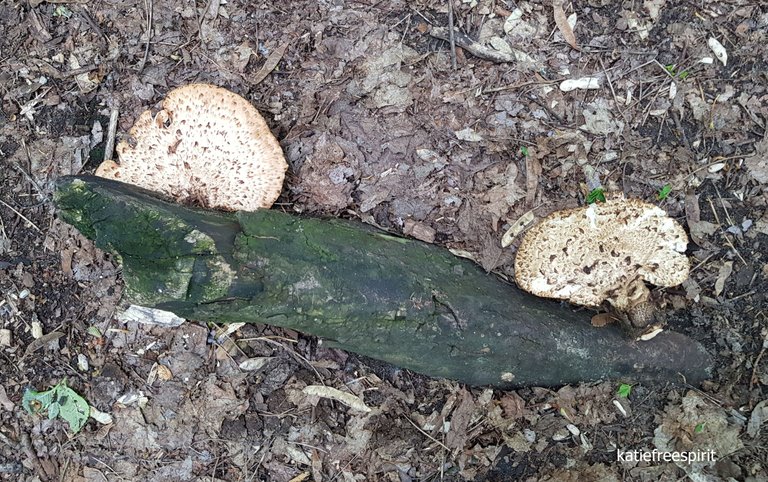
That is some interesting mushroom.
I really wonder how it taste.🤤
We also in Croatia have a mushroom that is similar to this and also edible. It is called Laetiporus sulphureus (Bull.) Murrill, people like to call it yellow bread.
common English name is 'chicken of the woods', and it is far more tasty mushroom, then Dryad's saddle (also sometimes being referred to as 'consolation mushroom' )))) @frki
Your post is upvoted by the community account. thank you for sharing your fungi with us. if you like what community is about, please, add FL as beneficiary in your future posts. lets grow together!
ta nazwa obowiązuje dopiero od tego roku, dawniej to była żagiew łuskowata. Bardzo smaczny grzyb jadalny, na flaczki, na smażonke, albo zmielony na kotlety. Zrobie o tym post ;)
Congratulations @katiefreespirit! You have completed the following achievement on the Hive blockchain and have been rewarded with new badge(s) :
Your next target is to reach 70000 upvotes.
You can view your badges on your board and compare yourself to others in the Ranking
If you no longer want to receive notifications, reply to this comment with the word
STOPTo support your work, I also upvoted your post!
Check out the last post from @hivebuzz:
Support the HiveBuzz project. Vote for our proposal!